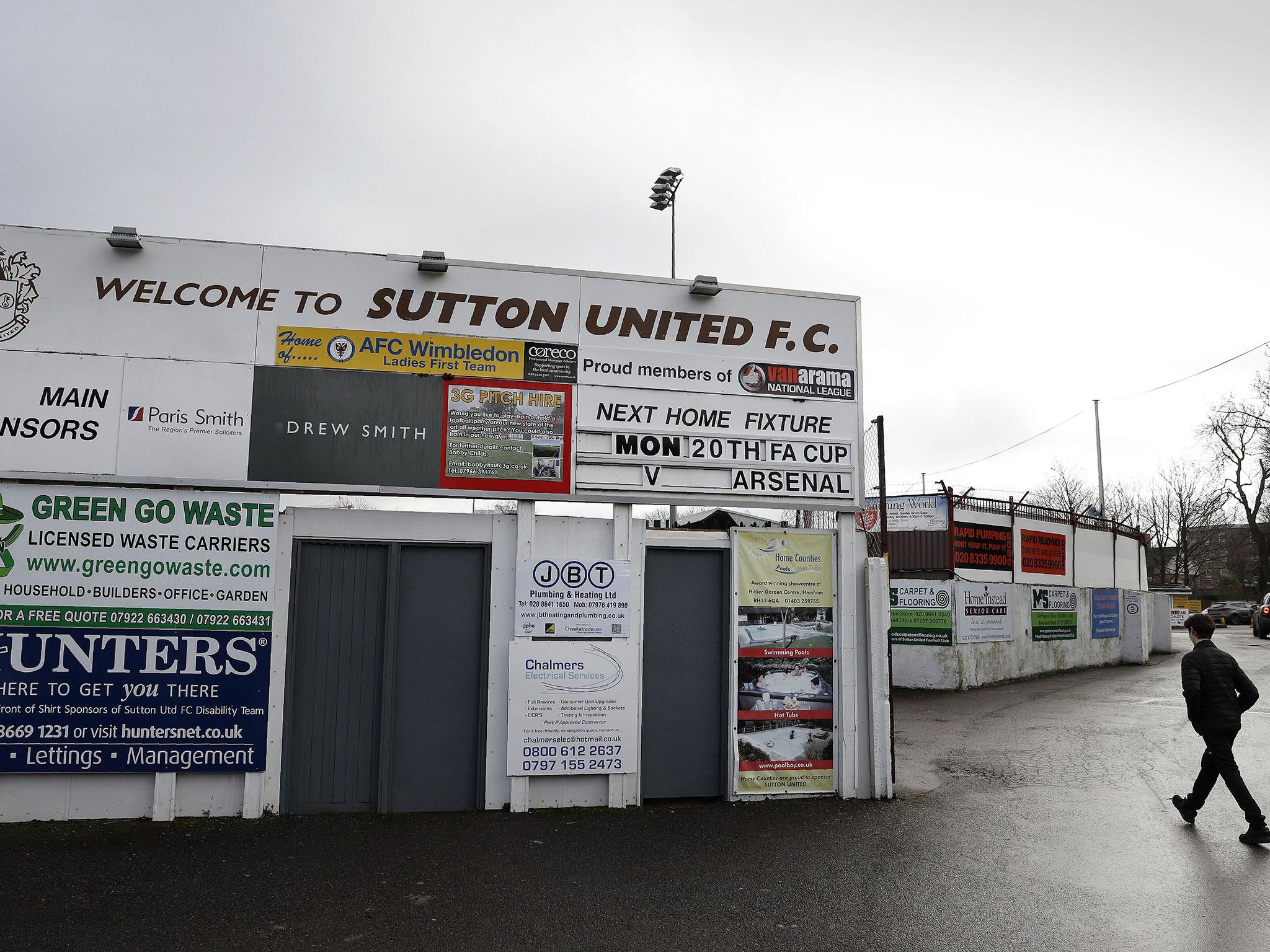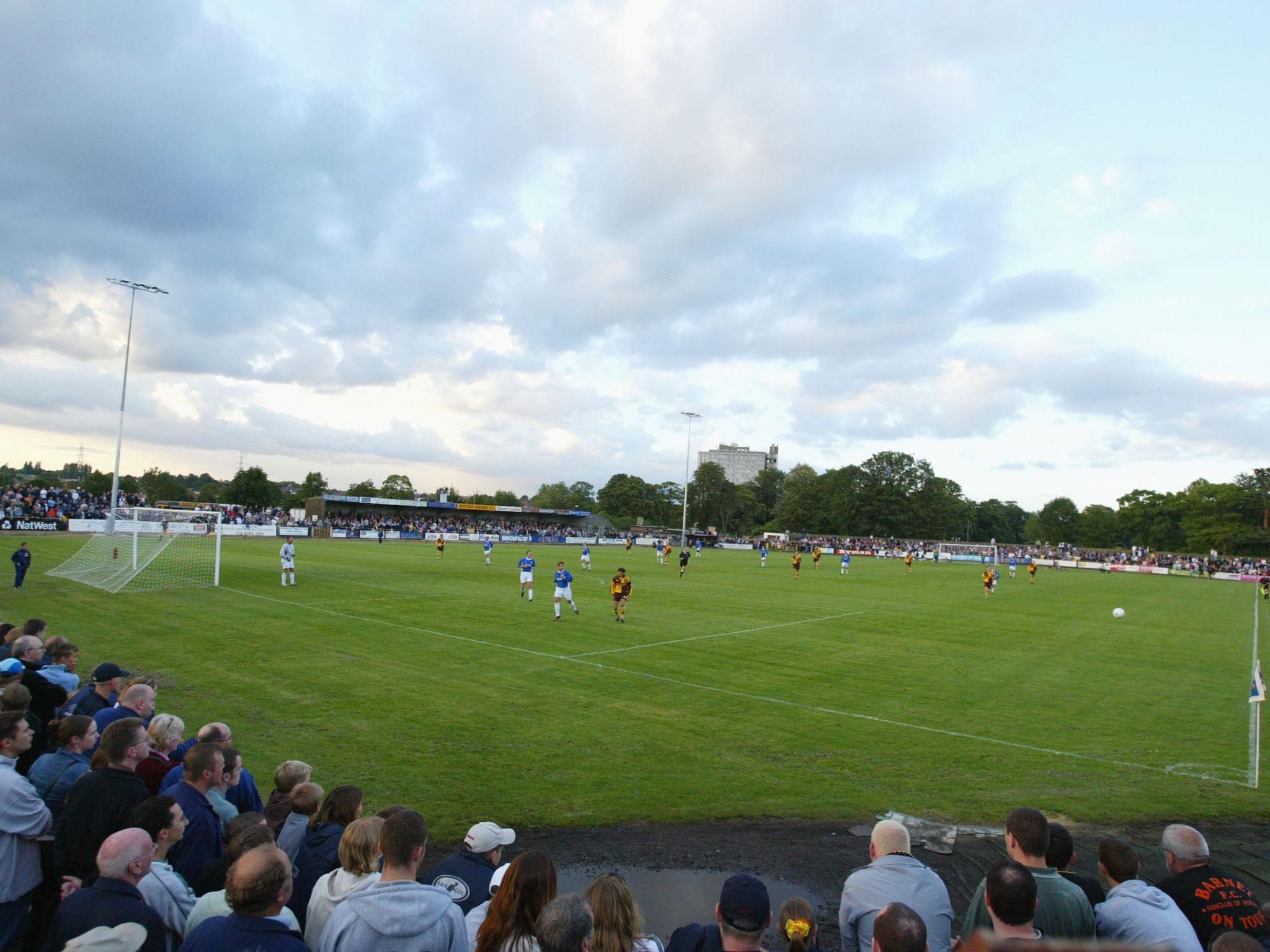After their humbling in Munich, Arsenal now face an altogether new challenge: how to play on an artifical pitch
The Gunners travel to Sutton United on Monday night in the FA Cup fifth round. Home to a 'FieldTurf Vertex pitch', Gander Green Lane will be quite the experience for Arsene Wenger's men

Your support helps us to tell the story
From reproductive rights to climate change to Big Tech, The Independent is on the ground when the story is developing. Whether it's investigating the financials of Elon Musk's pro-Trump PAC or producing our latest documentary, 'The A Word', which shines a light on the American women fighting for reproductive rights, we know how important it is to parse out the facts from the messaging.
At such a critical moment in US history, we need reporters on the ground. Your donation allows us to keep sending journalists to speak to both sides of the story.
The Independent is trusted by Americans across the entire political spectrum. And unlike many other quality news outlets, we choose not to lock Americans out of our reporting and analysis with paywalls. We believe quality journalism should be available to everyone, paid for by those who can afford it.
Your support makes all the difference.The Allianz Arena is a tough place to go but at least for Arsenal it is now fairly familiar. On Monday night they will face a whole new problem when they travel to Gander Green Lane to play Sutton United in the FA Cup fifth round: how to play on an artificial pitch.
Sutton have a FieldTurf Vertex pitch, installed by Newbury-based sports construction company S&C Slatter in July 2015. It cost £500,000, which Sutton manager Paul Doswell paid for himself, in the form of an interest-free loan which he is in no rush to have paid back. It has revolutionised life at the club, allowing all of their teams, and plenty of locals, to play and train on it.
All of which sounds very positive, and Sutton are at the forefront of a new wave of National League sides establishing artificial pitches. Maidstone United have one, and so this season do Tamworth and Harrogate Town in the National League North and Eastbourne Borough in the National League South. So do Slough Town in the Evo-Stik Southern Premier. Kilmarnock were first British side, buying a FieldTurf Vertex pitch in 2014 which is also used for Scotland rugby union games. Cardiff Blues rugby team have one too.
But this is newly possible for Sutton, Maidstone and the rest in Step One of the English non-league system. The National League amended its rule 24 two years ago to allow artificial grass pitches and the clubs are hurrying to install them, with more expected to follow this summer.
But not everyone sees the issue this way. The Football League is still resolutely against 3G pitches, even ones like Sutton’s which passes the Fifa Quality Pro standard. The Football League’s regulation 15 is very clear: “No league match shall be played on an artificial surface.”
The Football League simply does not think that the appetite is there from managers and players in its competition to play on artificial surfaces. If they were told by the PFA and the LMA that there was a hunger for Championship, League One and League Two teams to play on artificial grass, they would consider change, but that has not happened yet. The feeling at the National League is that these pitches are of good quality and that the Football League will be swimming against the tide if it does not relax its stance soon.
What this means for now is that if a team like Sutton were to be promoted from the National League, then they would have to dig up the pitch and replace it with grass if they wanted to play in League Two, a difficult and expensive decision for any club. There is no danger of that this year, with Sutton 17th and Maidstone United 19th in the National League. But the more National League teams embrace artificial pitches, the likelier it is that one day a team in this position will either have to get the diggers back in or have a serious think about their future.
Because the process of putting the pitch in at Gander Green Lane was no small operation. It started in May 2015, at the end of the 2014-15 season. The topsoil was stripped, the off-pitch subsoil was removed and the subsoil re-graded, hundreds of tons of soil having to be taken away. New drainage was installed then a specialist stone sub-base installed. Then the e-layer performance base, for shock absorbancy and to keep the surface together, was put in, before the 3G surface itself on top. It was all done in eight weeks.
The pitch was ready for Sutton to open it with a friendly against Bristol Rovers on 12 July 2015. It was then Sutton’s base for their promotion campaign from National League South in 2015-16, as well as transforming what the club could do away from the first team.

“I’d recommend the pitch quality to anybody, and I’d recommend the community benefits you get from it,” Doswell said last month. “We have created a pitch that, within five minutes of watching, you will forget you’re watching the game on plastic. I once went to Luton and saw the worst game of football I had ever seen, on what was basically astro-concrete. QPR was even worse. This is a non-comparison.”
The Gander Green Lane experiment has been very successful. The Football Association support 3G pitches – there are plenty of them at St George’s Park – and England C played Slovakia Under-21s at Sutton on 5 June 2016, losing a classic 4-3. But the Football League is not expecting to change its mind any time soon. If Sutton ever face Arsenal in the League Cup, it will not be on this pitch.
Join our commenting forum
Join thought-provoking conversations, follow other Independent readers and see their replies
Comments